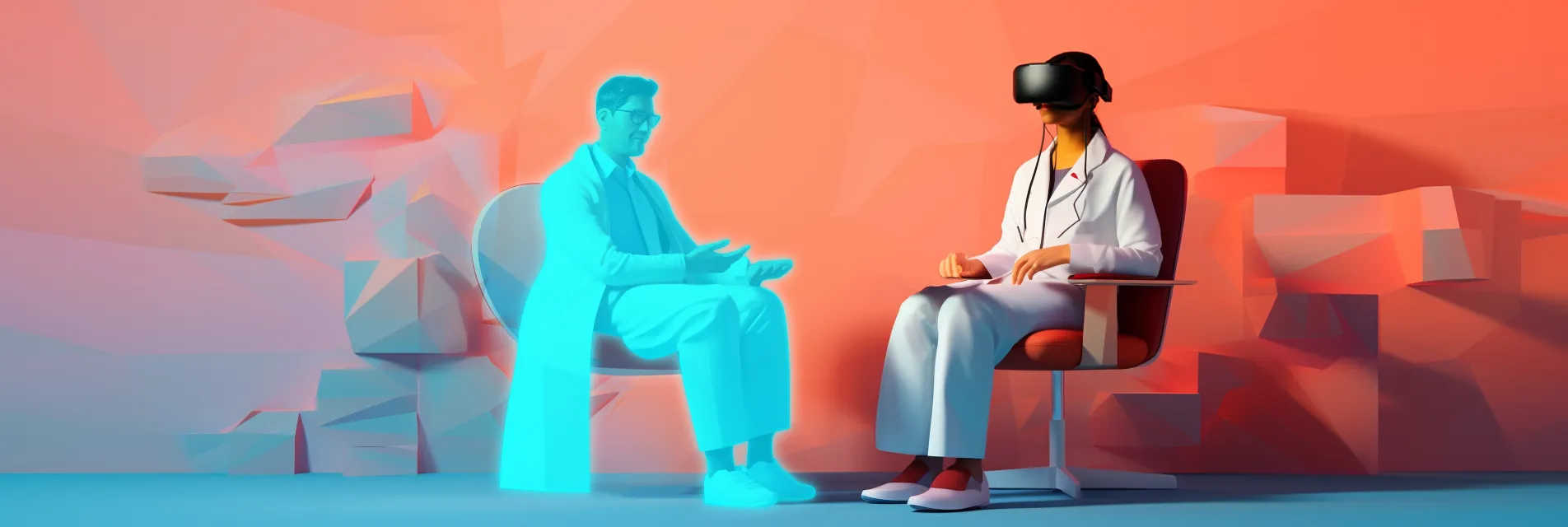AI-Powered VR: How Machine Learning is Enhancing the Virtual Reality Experience

Virtual reality (VR) has made tremendous strides in recent years, thanks to advancements in technology. Today, we can create immersive and realistic virtual environments, and these environments are only getting better. One area where VR has the potential for improvement is with artificial intelligence (AI) and machine learning (ML). In this blog post, we will explore how AI and ML are being used to enhance the VR experience, the benefits of using AI in VR, and some real-world examples of companies successfully using AI and ML in their VR products and services.
AI and ML have the potential to enhance the VR experience in several ways. For example, they can improve graphics, enhance user interaction, and create more personalized experiences.
AI is being used to create more realistic and detailed virtual environments by using machine learning algorithms to generate textures and lighting. This makes the VR experience more immersive and engaging, and users feel like they are actually in the virtual world.
ML algorithms can also enhance user interaction in VR by creating more intelligent and responsive virtual characters. These characters can react to user input and behave more like real people, making the VR experience feel more natural and engaging.
Another benefit of using AI in VR is the ability to create more personalized experiences. By analyzing user data, AI can create customized environments and experiences tailored to the user’s preferences and behaviors. This can make the VR experience more engaging and enjoyable, as users feel like the experience is designed specifically for them.
Personalized Content: ML algorithms are being used to personalize the VR experience for each user by analyzing a user’s behavior and preferences and adjusting the VR experience to better suit their needs.
Gesture Recognition: ML algorithms are also being used to recognize hand gestures and movements in VR, which can be used to control objects or interact with the environment in a more natural way.
Realistic Physics: ML algorithms are being used to simulate more realistic physics in VR environments, allowing objects in the VR environment to behave more like they would in the real world and creating a more immersive experience.
Natural Language Processing: ML algorithms are being used to understand natural language commands in VR, allowing users to speak to the VR environment in a more natural way.
Object Recognition: ML algorithms are being used to recognize objects in the VR environment, providing more context and information about the environment.
There are already several companies successfully using AI and ML in their VR products and services, including:
Facebook: Facebook AI Research (FAIR) is using machine learning to enhance the VR experience by creating more realistic virtual avatars that can mimic the user’s facial expressions and movements.
Google: Google’s Tilt Brush VR software uses machine learning to create more realistic and detailed virtual environments, leveraging algorithms to generate textures and lighting based on the user’s input.
Nvidia: Nvidia’s AI-powered DLSS technology uses machine learning to upscale lower-resolution images, creating more detailed and realistic graphics in VR.
Walmart: Walmart is using VR to train its employees on various aspects of the job and is now using machine learning algorithms to personalize the VR training experience for each employee based on their job role, learning style, and performance.
Ford: Ford is using VR and machine learning to design and test new vehicles, creating virtual environments to simulate real-world driving conditions and using machine learning algorithms to analyze the data generated by these simulations.
Boeing: Boeing is using VR and machine learning to train pilots and maintenance workers, using machine learning algorithms to adapt to each user’s performance and provide personalized feedback.
Accenture: Accenture has developed a VR platform called the “Accenture Extended Reality (XR) Platform” that uses machine learning to personalize the experience for each user. The platform uses machine learning algorithms to analyze user behavior and preferences, and adjusts the VR experience accordingly.
Lowe’s: Lowe’s is using VR and machine learning to help customers visualize home improvement projects. The company has developed a VR tool that uses machine learning algorithms to recognize objects in a room and provide personalized design recommendations based on the customer’s preferences.
These are just a few examples of how companies are using machine learning to enhance the virtual reality experience. As technology continues to advance, we can expect even more innovative applications in the future.
AI has the potential to revolutionize the VR experience, creating more immersive, engaging, and personalized virtual environments. With the help of machine learning algorithms, developers can create more realistic graphics, more intelligent virtual characters, and more personalized experiences. As VR technology continues to evolve, we can expect to see more companies using AI to enhance their VR products and services.
Dive deeper into the transformative role of machine learning in application by exploring the transformative benefits of machine learning.